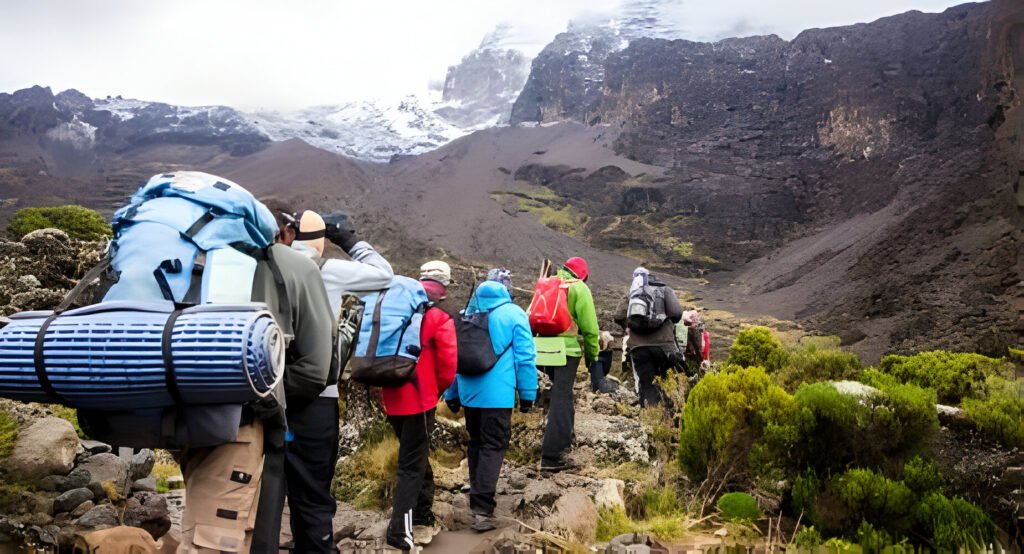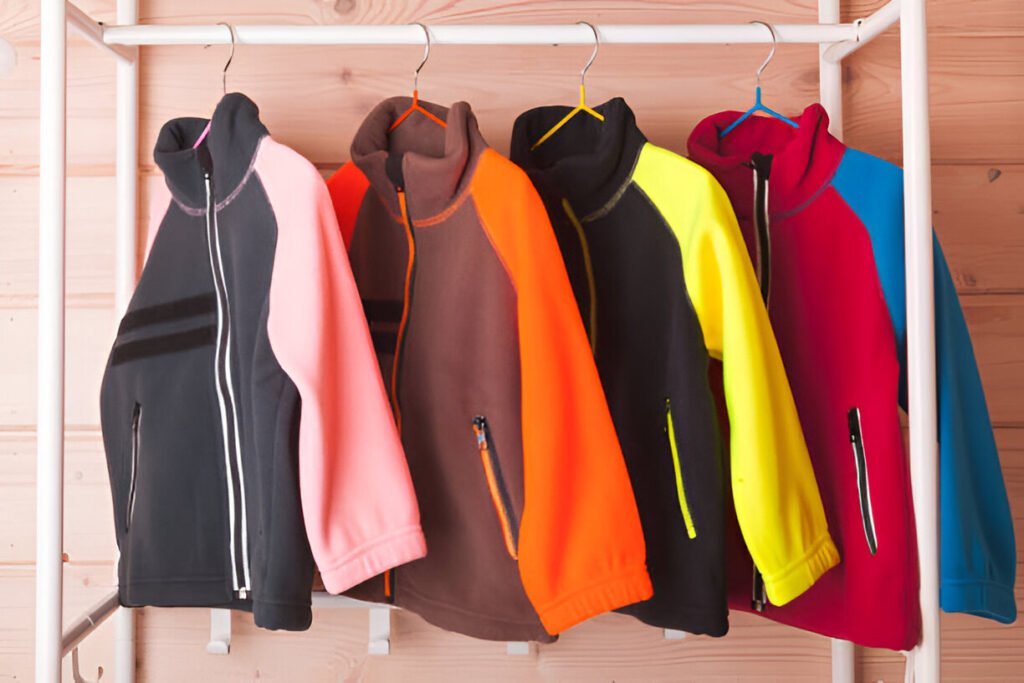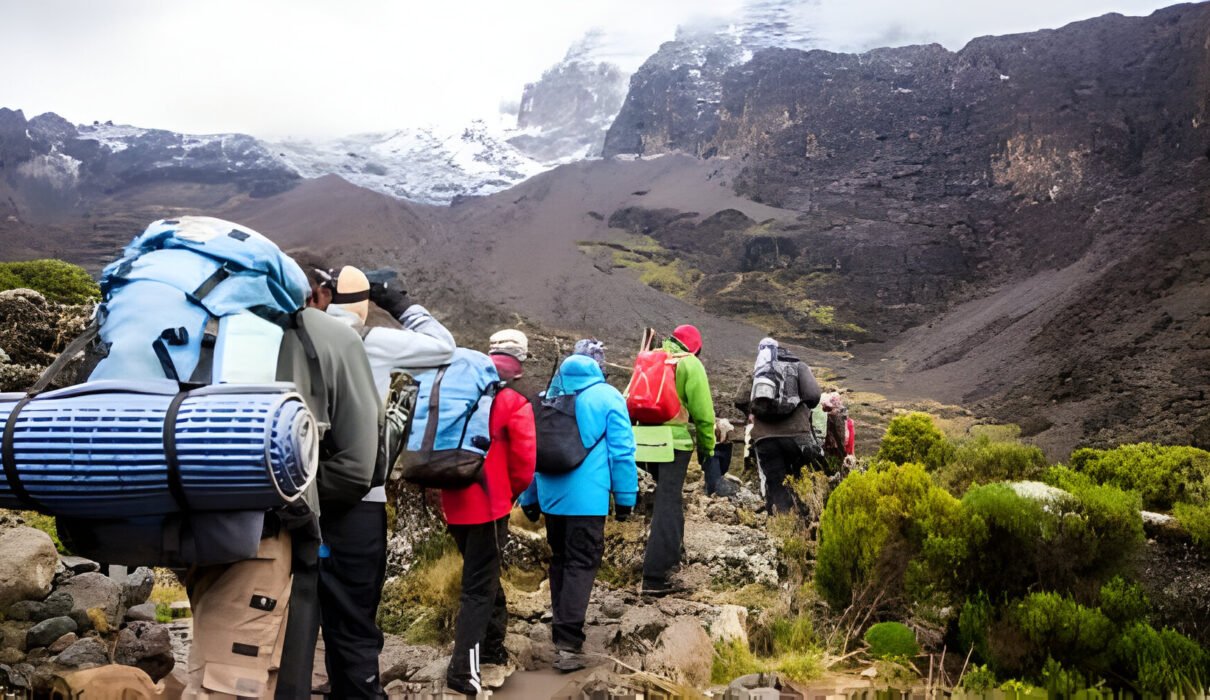Essential Gear You Need to Climb Kilimanjaro : Climbing Mount Kilimanjaro is an incredible adventure that requires the right preparation. Ensuring you have the essential gear is key to a successful and safe summit attempt. From high-altitude clothing to camping equipment, having the right gear will make your trek up Africa’s highest peak more comfortable and enjoyable. In this guide, we’ll walk you through the must-have items for your Kilimanjaro climb.
Learn more about Kilimanjaro climbing preparations.

Essential Gear You Need to Climb Kilimanjaro : Clothing for All Kilimanjaro Climates
Mount Kilimanjaro’s ascent takes you through five different climatic zones, each with varying temperatures and weather conditions. It’s crucial to pack clothing that can be layered, allowing you to adapt to both warm and cold temperatures as you climb higher.
Base Layers
Your base layers should be moisture-wicking to keep sweat off your body and prevent you from getting cold. Choose quick-drying, lightweight thermal tops and bottoms.
- Recommended: Synthetic or merino wool base layers.
- Why It’s Important: Keeping dry is essential for maintaining body heat in the cold upper regions of the mountain.
Explore the best moisture-wicking base layers for trekking.
Mid Layers
Mid layers provide insulation. Fleece jackets and lightweight down jackets are excellent choices for staying warm.
- Recommended: A fleece jacket and an insulating down jacket.
- Why It’s Important: Provides warmth during the cold nights and summit day.
Find out more about the best mid layers for high-altitude climbs.
Outer Layers
Outer layers include waterproof and windproof jackets and pants to protect you from the elements. You will encounter rain, snow, and strong winds, especially as you approach the summit.
- Recommended: A waterproof shell jacket and pants.
- Why It’s Important: Essential for staying dry and protected in varying weather conditions.
Get more tips on the best outer layers for extreme conditions.
Essential Gear You Need to Climb Kilimanjaro – Footwear: The Right Boots and Socks
The right footwear is one of the most critical pieces of gear for climbing Kilimanjaro. Your boots should be sturdy, waterproof, and well broken-in to prevent blisters and ensure comfort on the rocky terrain.
Hiking Boots
You’ll need high-quality hiking boots that are waterproof, offer good ankle support, and have a solid grip for the steep and rocky paths of Kilimanjaro.
- Recommended: Waterproof, high-ankle hiking boots.
- Why It’s Important: Durable boots protect your feet and provide stability on rugged trails.
Discover the best hiking boots for Kilimanjaro.
Trekking Socks
Invest in moisture-wicking, cushioned trekking socks. Wool or synthetic blend socks are ideal for keeping your feet dry and preventing blisters.
- Recommended: Merino wool socks.
- Why It’s Important: Prevents blisters and keeps feet warm in cold temperatures.
Learn about the best trekking socks for high-altitude climbs.
Essential Gear You Need to Climb Kilimanjaro : Essential Hiking Gear for Kilimanjaro
Besides clothing and footwear, you’ll need specific hiking gear to ensure your climb is comfortable and safe.
Daypack
A durable daypack is necessary to carry your essentials like water, snacks, camera, and extra layers during the daily hikes.
- Recommended Size: 20-30 liters.
- Features: Look for one with a hydration system, padded straps, and a rain cover.
Explore top-rated daypacks for mountain trekking.
Trekking Poles
Trekking poles are highly recommended, especially for the descent when your legs are tired, and the paths are steep.
- Recommended: Lightweight, adjustable trekking poles.
- Why It’s Important: Reduces strain on knees and helps with balance on uneven terrain.
Find out why trekking poles are essential for Kilimanjaro.
Essential Gear You Need to Climb Kilimanjaro : Sleep Gear for a Comfortable Rest
Your nights on Kilimanjaro will be spent in tents, so having the right sleep gear is essential for staying warm and comfortable, especially at high altitudes.
Sleeping Bag
A high-quality sleeping bag rated for sub-zero temperatures is necessary as temperatures can drop well below freezing at higher camps.
- Recommended: A sleeping bag rated for at least -10°C (14°F).
- Why It’s Important: Ensures you stay warm and well-rested in freezing conditions.
Discover the best sleeping bags for cold-weather camping.
Sleeping Pad
A sleeping pad provides insulation from the cold ground and adds a layer of comfort to your tent setup.
- Recommended: An inflatable or foam sleeping pad with good insulation (R-value 3+).
- Why It’s Important: Prevents heat loss through the ground and ensures a comfortable night’s sleep.
Learn more about the best sleeping pads for Kilimanjaro climbs.
Essential Gear You Need to Climb Kilimanjaro : Hydration and Nutrition
Staying hydrated and well-nourished on Kilimanjaro is crucial for your energy and altitude acclimatization.
Hydration System
It’s essential to carry enough water each day to prevent dehydration, especially at high altitudes. A hydration system, such as a hydration bladder, makes it easy to drink water while trekking.
- Recommended: 3-liter hydration bladder.
- Why It’s Important: Helps you stay hydrated without stopping frequently.
Explore hydration packs perfect for mountain treks.
Water Purification
You’ll need a way to purify water from streams or camp sources. Water purification tablets or a portable water filter are lightweight options that will keep you hydrated and safe.
- Recommended: Water purification tablets or a lightweight filtration system.
- Why It’s Important: Ensures access to clean water, reducing the risk of waterborne illnesses.
Find out more about water purification options for Kilimanjaro.
Essential Gear You Need to Climb Kilimanjaro : Personal and Emergency Items
When climbing Kilimanjaro, you’ll need several personal items and emergency gear to stay comfortable and safe during your ascent.
Headlamp
A headlamp is crucial for early morning summit attempts and navigating camp at night. Ensure it’s powerful and has extra batteries.
- Recommended: LED headlamp with at least 200 lumens.
- Why It’s Important: Provides hands-free light for dark conditions.
Discover the best headlamps for mountain trekking.
First Aid Kit
Carry a basic first aid kit that includes bandages, blister treatment, pain relievers, and any personal medications.
- Must-Have Items: Blister plasters, ibuprofen, altitude sickness medication (like Diamox).
- Why It’s Important: Treats minor injuries and ailments during the trek.
Learn more about building the perfect trekking first aid kit.
Packing Smart for Kilimanjaro: Final Tips
Packing smart for Kilimanjaro means bringing what you need while keeping your load as light as possible. Limit your gear to essentials, and use a reliable duffel bag for porters to carry your belongings. Keep in mind the weight limit for porters (usually 15 kg or 33 lbs) and pack accordingly.
- Porter Gear: Use a waterproof duffel bag to protect your items during the trek.
- Personal Essentials: Sunscreen, lip balm, sunglasses, and a wide-brimmed hat are all must-haves.
Learn more about what to pack for your Kilimanjaro trek.

Essential Gear You Need to Climb Kilimanjaro : Conclusion
Climbing Kilimanjaro is a once-in-a-lifetime experience, and being well-prepared with the right gear will make your journey safer, more comfortable, and enjoyable. From the proper clothing layers to essential hiking gear and personal items, each piece of equipment plays a critical role in ensuring a successful climb. Make sure to pack smart and take the time to choose gear that suits your needs for this incredible adventure.
For more expert advice and assistance in preparing for your Kilimanjaro climb, visit Kilimanjaro Climb Specialist or Eddy Tours & Safaris.

